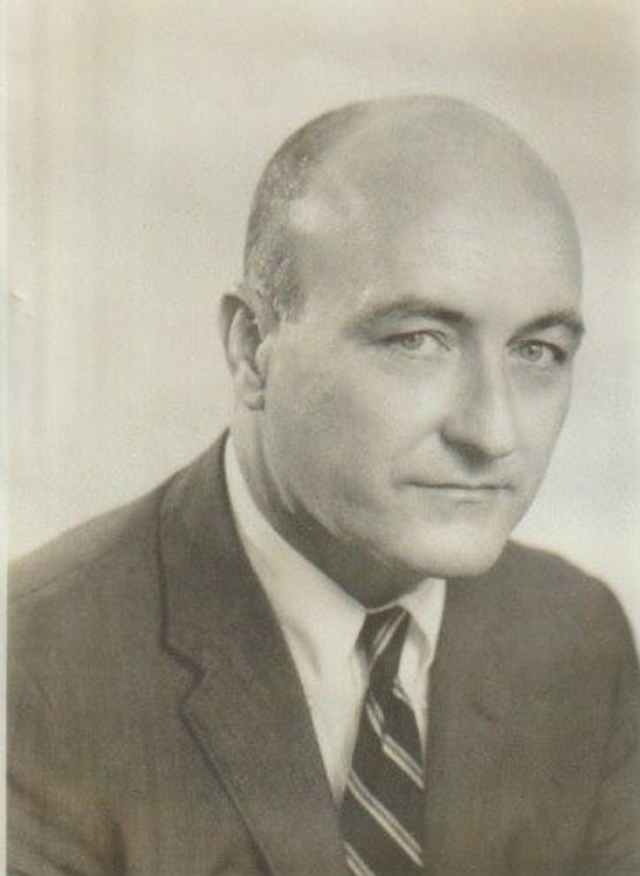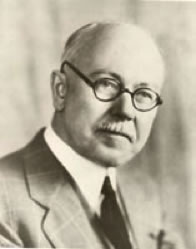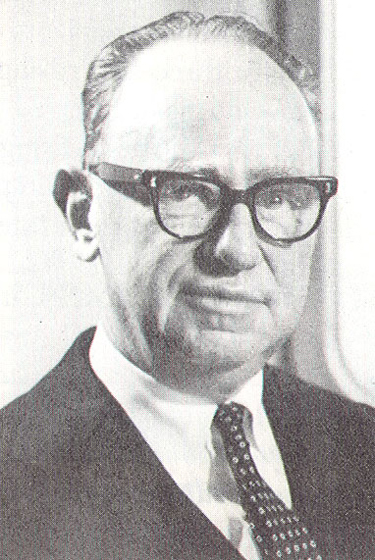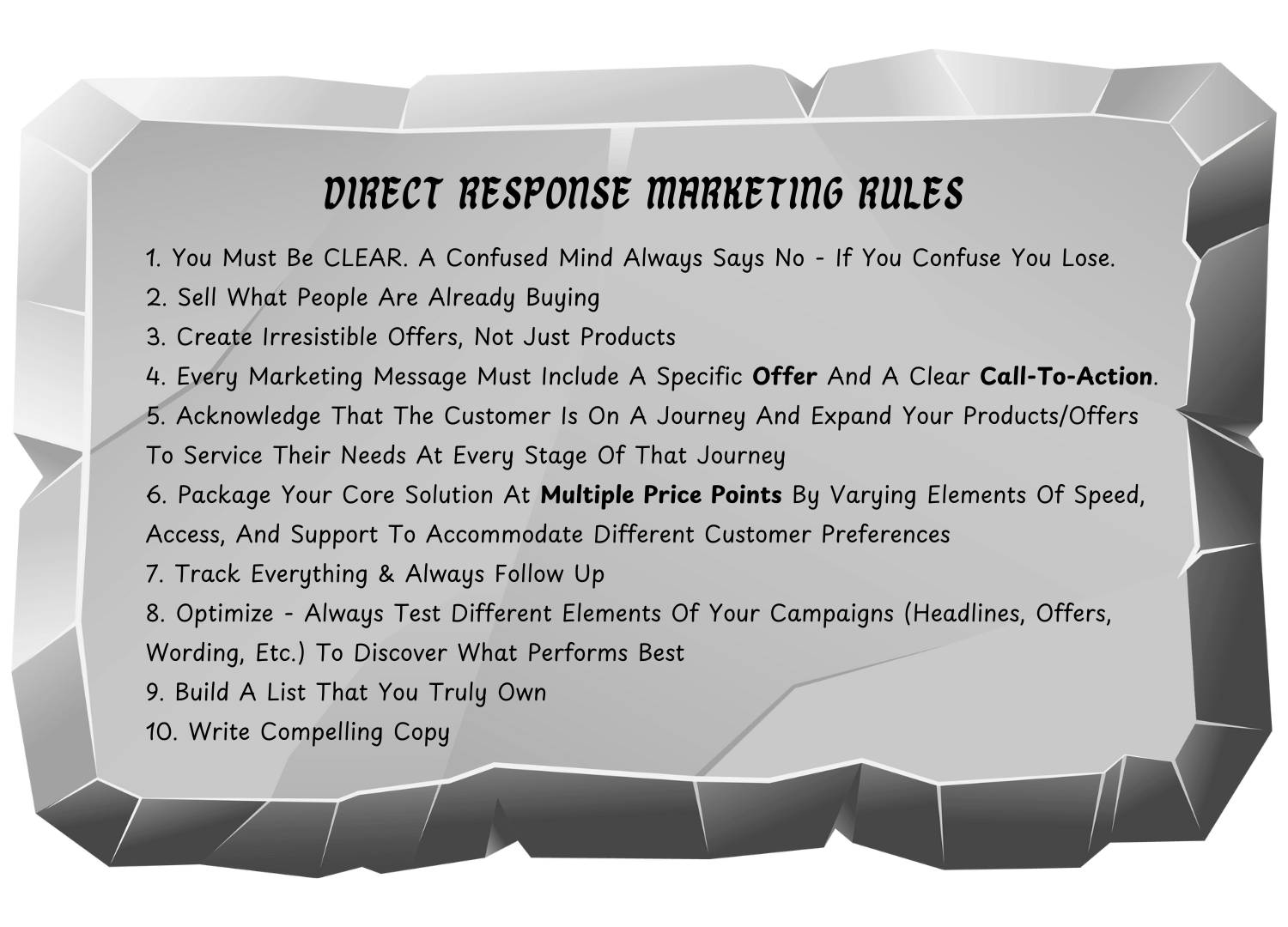The Greatest Copywriters of All Time: The Masters Who Built the Foundation of Modern Creator Success
When Dan Kennedy went through his divorce, he shocked everyone around him by giving his wife the house, the cars, and the bank accounts—everything. But there was one thing he fought tooth and nail to keep: his customer list. His friends thought he'd lost his mind. His lawyers were baffled. But Kennedy knew something they didn't. With his list and his proven copywriting skills, he could rebuild everything else within months. Without the list, he'd be starting from zero, no matter how much money he had in the bank.
This story, now legendary in marketing circles, illustrates a truth that most modern creators have completely forgotten: systematic revenue generation isn't built on follower counts or viral moments—it's built on the timeless principles established by copywriting masters who came before us. While today's creators chase algorithm updates and platform changes, they're ignoring the century-old foundations that built billion-dollar businesses and continue to separate Level 5 creators from those trapped at lower monetization levels.

The greatest copywriters in history weren't just writers—they were systematic business builders who proved that words, when crafted according to scientific principles, could predictably generate massive revenue regardless of the medium. Their methods work as brilliantly today as they did decades ago, but only for creators wise enough to study and apply them. The rest remain stuck on the content hamster wheel, hoping their next post will be the one that changes everything.
Let's journey through five distinct eras of copywriting mastery, meeting the legends who established the rules that smart creators still follow today.
The Foundation That Built Empires
Before we explore these masters, understand this: copywriting isn't about clever wordplay or creative expression. It's about conversion creation—systematically moving people from curiosity to customer through written persuasion. This aligns perfectly with Brooker Creek Rule #10: Write Compelling Copy, but these historical masters prove that great copy is just one component of building systematic revenue generation.
Each era we'll explore reveals copywriters who didn't just write ads—they engineered business systems that generated predictable income for decades. Their principles are what separate creators who build lasting businesses from those who remain platform-dependent performers. Understanding their methods is essential for anyone serious about ascending the Creator Monetization Pyramid to true business ownership.
Era 1: The Foundational Era (1900s-1950s) - The Inventors Who Proved Marketing Was Science
Claude Hopkins - The Scientific Pioneer
Claude Hopkins (1866-1932) literally wrote the book on scientific advertising, transforming marketing from guesswork to measurable science. His campaigns made products like Schlitz beer, Palmolive, and Pepsodent household names, and his methods are still studied by top copywriters today.
Hopkins took Schlitz from fifth place in beer sales to first with a single five-page advertisement filled with solid text. But his real innovation wasn't any single campaign—it was proving that advertising could be tested, measured, and optimized systematically. He invented split testing, coupon-based tracking, sampling campaigns, and copy research. When Albert Lasker hired him at Lord & Thomas in 1907, Hopkins commanded a salary of $185,000 per year—equivalent to over $6 million today.
Hopkins established the fundamental principle that still governs all direct response marketing: "The advertiser is 'playing on the safe side of a hundred to one shot'" by testing everything before committing major resources. His book "Scientific Advertising" has sold over eight million copies and David Ogilvy wrote that "Nobody should be allowed to have anything to do with advertising until he has read this book seven times."
Modern connection: Every A/B test you run, every metric you track, every systematic approach to content optimization traces back to Hopkins' pioneering work.
Robert Collier - The Direct Mail Master
Robert Collier wrote some of the most celebrated headlines in direct-mail history, including "Give Me 15 Minutes and I'll Give You a Super-Power Memory," which launched Harry Lorraine's first memory book. But his lasting contribution is "The Robert Collier Letter Book"—a collection of sales letters that has influenced copywriters for nearly a century.
Collier understood that direct mail wasn't about reaching everyone—it was about reaching the right people with precisely the right message at exactly the right moment. His letters demonstrated the power of deep market research and psychological understanding, principles that modern email marketers desperately need to rediscover.
John Caples & Victor Schwab - The Testing Revolutionaries
John Caples popularized the use of test campaigns and established many of the headline formulas still used today. Victor Schwab wrote "How to Write a Good Advertisement" and proved that systematic testing could dramatically improve campaign performance.
 Together, these pioneers established that successful marketing required scientific methodology, not creative guessing. Their testing frameworks laid the groundwork for every modern conversion optimization strategy.
Together, these pioneers established that successful marketing required scientific methodology, not creative guessing. Their testing frameworks laid the groundwork for every modern conversion optimization strategy.
Era 1 Lesson: The foundation builders proved that marketing was science, not art. They established measurement, testing, and systematic optimization as non-negotiable requirements for sustainable business success.
Era 2: The Golden Age of Madison Avenue (1940s-1970s) - The Scalers Who Built Empires
David Ogilvy - The Father of Advertising
David Ogilvy (1911-1999) founded Ogilvy & Mather and became known as the "Father of Advertising." He attributed his success to meticulous research into consumer habits and created some of the most famous campaigns in advertising history.
His most famous campaign was for Rolls-Royce, featuring the headline "At 60 miles an hour the loudest noise in this new Rolls-Royce comes from the electric clock." Ogilvy called it "the best headline I ever wrote." The campaign increased Rolls-Royce sales by 50% in 1958 and ran consistently until 1962.
What made Ogilvy exceptional wasn't just his writing—it was his systematic approach to understanding customers. He spent three weeks researching Rolls-Royce before writing a single word, and his headline actually came from a quote in The Motor magazine's technical review.
Ogilvy bridged brand building with direct response, proving that respect for your audience and systematic selling could coexist. His influential books "Confessions of an Advertising Man" (1963) and "Ogilvy on Advertising" (1983) established many principles still followed today.
Leo Burnett & Lester Wunderman - Brand Meets Direct
Leo Burnett created iconic brand characters like the Marlboro Man and Tony the Tiger, proving that systematic campaigns could create lasting emotional connections. Meanwhile, Lester Wunderman coined the term "direct marketing" and pioneered data-driven customer relationships.
-png.png?width=146&height=174&name=image%20(3)-png.png) Together, they showed that scale required systems that worked for millions, not just dozens—a lesson modern creators desperately need as they move from influencer status to business ownership.
Together, they showed that scale required systems that worked for millions, not just dozens—a lesson modern creators desperately need as they move from influencer status to business ownership.
Era 2 Lesson: Scale requires systems that work for millions while maintaining the personal connection that drives conversions. The most successful campaigns combine emotional resonance with systematic measurement.
Era 3: The Direct Response Golden Age (1960s-1990s) - The Revenue Generators
This era produced the copywriting legends who proved that great copy could generate predictable, massive revenue—the essence of what we now call Level 5 monetization.
Eugene Schwartz - The Psychology Master
 Eugene Schwartz authored "Breakthrough Advertising," widely considered the copywriter's bible. His "hit ratio" was an unprecedented 85%—meaning 85% of his campaigns succeeded, a record virtually unmatched in marketing history.
Eugene Schwartz authored "Breakthrough Advertising," widely considered the copywriter's bible. His "hit ratio" was an unprecedented 85%—meaning 85% of his campaigns succeeded, a record virtually unmatched in marketing history.
Schwartz wrote one ad that sold 1.98 million copies of a single $25 book. He also wrote the ad that started Boardroom Reports, helping the company grow from $3,500 to over $50 million in annual sales.
Schwartz's revolutionary insight was that advertising shouldn't create desire—it should channel existing mass desire toward specific products. As he explained: "The desire must already be there. It must already exist. You cannot create it, and you cannot fight it. But you can direct it, channel it, and focus it onto your particular product."
This connects directly to our understanding of the customer journey—different people are at different stages of desire and require different messages to move forward.
Gary Halbert - The Prince of Print
Gary Halbert (1938-2007) was often called the "Prince of Print." His legendary sales letters generated over $1 billion in revenue, making him arguably the highest-paid copywriter in history.
While serving time in Boron Federal Penitentiary for tax fraud in the 1980s, Halbert wrote letters to his son that became "The Boron Letters"—a collection now considered essential reading for copywriters and marketers.
Halbert's genius lay in his conversational, authentic style that connected emotionally while driving systematic sales. He understood that people buy emotionally and justify logically, and his copy reflected genuine personality and honesty rather than corporate polish.
Modern parallel: Halbert proved that authentic, personality-driven marketing could generate massive systematic revenue—exactly what today's creators need to understand about authentic monetization.
Martin Conroy - The Billion-Dollar Letter Writer
 Martin Conroy (1922-2006) wrote what many consider the most successful advertisement in history—the Wall Street Journal's "Tale of Two Young Men" letter. This simple two-page letter ran for 28 years (1975-2003) and generated an estimated $2 billion in subscription revenue.
Martin Conroy (1922-2006) wrote what many consider the most successful advertisement in history—the Wall Street Journal's "Tale of Two Young Men" letter. This simple two-page letter ran for 28 years (1975-2003) and generated an estimated $2 billion in subscription revenue.
The letter begins: "On a beautiful late spring afternoon, twenty-five years ago, two young men graduated from the same college. They were very much alike, these two young men..." It tells the story of two similar graduates—one became company president, the other manages a small department. The difference? Access to business knowledge.
According to Wall Street Journal executives, approximately 55% of all mail-order subscriptions over 18 years came from this single letter, making it directly responsible for over $1 billion in revenue.
Conroy understood that storytelling could systematically drive business results when connected to clear value propositions—a lesson every creator needs to master.
Era 3 Lesson: This golden age proved that systematic copywriting could generate predictable, massive revenue streams that ran for decades. The principles they established became the foundation for all modern direct response marketing.
Era 4: The Info-Marketing Empire Builders (1980s-2000s) - The System Creators
Dan Kennedy - The Business Builder
 Dan Kennedy authored seven popular "No B.S." books and thirteen business books total, becoming a serial multi-millionaire entrepreneur who influenced over one million independent business owners annually through newsletters, coaching programs, and consulting.
Dan Kennedy authored seven popular "No B.S." books and thirteen business books total, becoming a serial multi-millionaire entrepreneur who influenced over one million independent business owners annually through newsletters, coaching programs, and consulting.
Kennedy's "No B.S. Direct Marketing" established 10 rules that businesses should follow to switch from traditional advertising to direct response marketing. His "Magnetic Marketing" system became the foundation for countless successful businesses.
Kennedy transformed from copywriter to business system creator, proving that direct response principles could build entire industries around systematic customer acquisition and retention.
The Newsletter Emperors
Writers like Mark Ford (Michael Masterson) and others built publishing empires worth hundreds of millions by applying direct response principles to newsletter publishing. They proved that owned audiences—people who actively chose to receive your content—were far more valuable than any social media following.
This era demonstrated that list ownership wasn't just important—it was the foundation of sustainable business empires.
Era 4 Lesson: Copy became the engine for building entire business systems, not just selling individual products. These masters showed that systematic customer acquisition could create predictable, scalable enterprises.
Era 5: The Digital Revolution (2000s-Present) - The Modern Adapters
Russell Brunson, Frank Kern, Ryan Deiss - The Funnel Masters
Modern practitioners like Russell Brunson took timeless direct response principles and applied them to digital sales funnels. Brunson's "offer stacks" are simply modern versions of classic direct response techniques, proving that the fundamentals work regardless of technology.

-png.png?width=120&height=120&name=image%20(4)-png.png) Frank Kern pioneered casual, authentic online marketing that generated massive revenue while maintaining genuine relationships with audiences. Ryan Deiss built DigitalMarketer by systematically applying proven frameworks to modern platforms.
Frank Kern pioneered casual, authentic online marketing that generated massive revenue while maintaining genuine relationships with audiences. Ryan Deiss built DigitalMarketer by systematically applying proven frameworks to modern platforms.
Ben Settle - The Email Specialist
 Ben Settle focused his expertise on daily email marketing, building a successful business around the principle that consistent, valuable communication builds systematic revenue over time.
Ben Settle focused his expertise on daily email marketing, building a successful business around the principle that consistent, valuable communication builds systematic revenue over time.
Era 5 Lesson: Technology amplifies principles but doesn't replace them. The most successful modern marketers are those who understand historical fundamentals and apply them using contemporary tools.
What Modern Creators Can Learn from the Masters
The 5 Universal Principles Across All Eras:
- Systematic thinking beats random tactics - From Hopkins' scientific testing to Brunson's funnel frameworks, success requires systems, not hopes.
- Test everything, assume nothing - Every master emphasized measurement and optimization over creative assumptions.
- Psychology doesn't change, only mediums do - Schwartz's insights about desire and Halbert's emotional connection strategies work as well today as they did decades ago.
- Build assets, don't just create content - Collier's letters and Kennedy's lists became valuable business assets that generated revenue for years.
- Value creation always beats price competition - Ogilvy's premium positioning and modern offer engineering both focus on increasing value rather than decreasing prices.
How to Apply This Today:
Study these masters before studying platform tactics. Their principles provide the foundation for all successful marketing, regardless of current trends or technologies.
Focus on conversion principles, not just content creation. Great content that doesn't convert is worthless for business building.
Build systematic customer acquisition using proven direct response principles, then apply modern tools to scale those systems.
The creators who master these timeless fundamentals while using contemporary technology don't just succeed—they dominate their markets while others chase algorithmic approval.
Conclusion: Standing on the Shoulders of Giants
While today's creators obsess over algorithm changes and viral content strategies, the real winners are studying principles established by copywriting legends who built systematic revenue generation that lasted decades. These masters created the roadmap for what we now call Level 5 monetization—true business ownership through systematic customer acquisition.
The opportunity has never been greater to apply their proven methods using modern technology. Email marketing tools are more sophisticated than ever. Automation allows systematic follow-up at scale. Analytics provide measurement capabilities these legends could only dream of.
But technology without principle is just expensive noise. The creators who combine historical wisdom with contemporary tools don't just build audiences—they build business empires that generate systematic revenue regardless of platform changes or algorithm updates.
Your choice is simple: continue chasing trends and hoping for viral moments, or study the masters who established the systematic foundations that separate lasting businesses from temporary influencer status. The principles that built billion-dollar empires haven't become obsolete—they've become opportunities for creators wise enough to learn from history's greatest revenue generators.
Start with the foundations these legends established. Then use modern tools to scale their proven systems. In a world of random content creation and algorithmic dependence, mastering the principles of systematic revenue generation becomes the ultimate competitive advantage.
The masters showed us the way. The question isn't whether their methods work—it's whether you're ready to stop gambling with viral content and start building systematic business success that lasts.
For more insights on building systematic creator businesses using these proven principles, explore our complete framework in The 10 Rules of Direct Response Marketing and discover how to apply them at every level of The Creator Monetization Pyramid



-png.png?width=154&height=160&name=image%20(2)-png.png)


.png)
